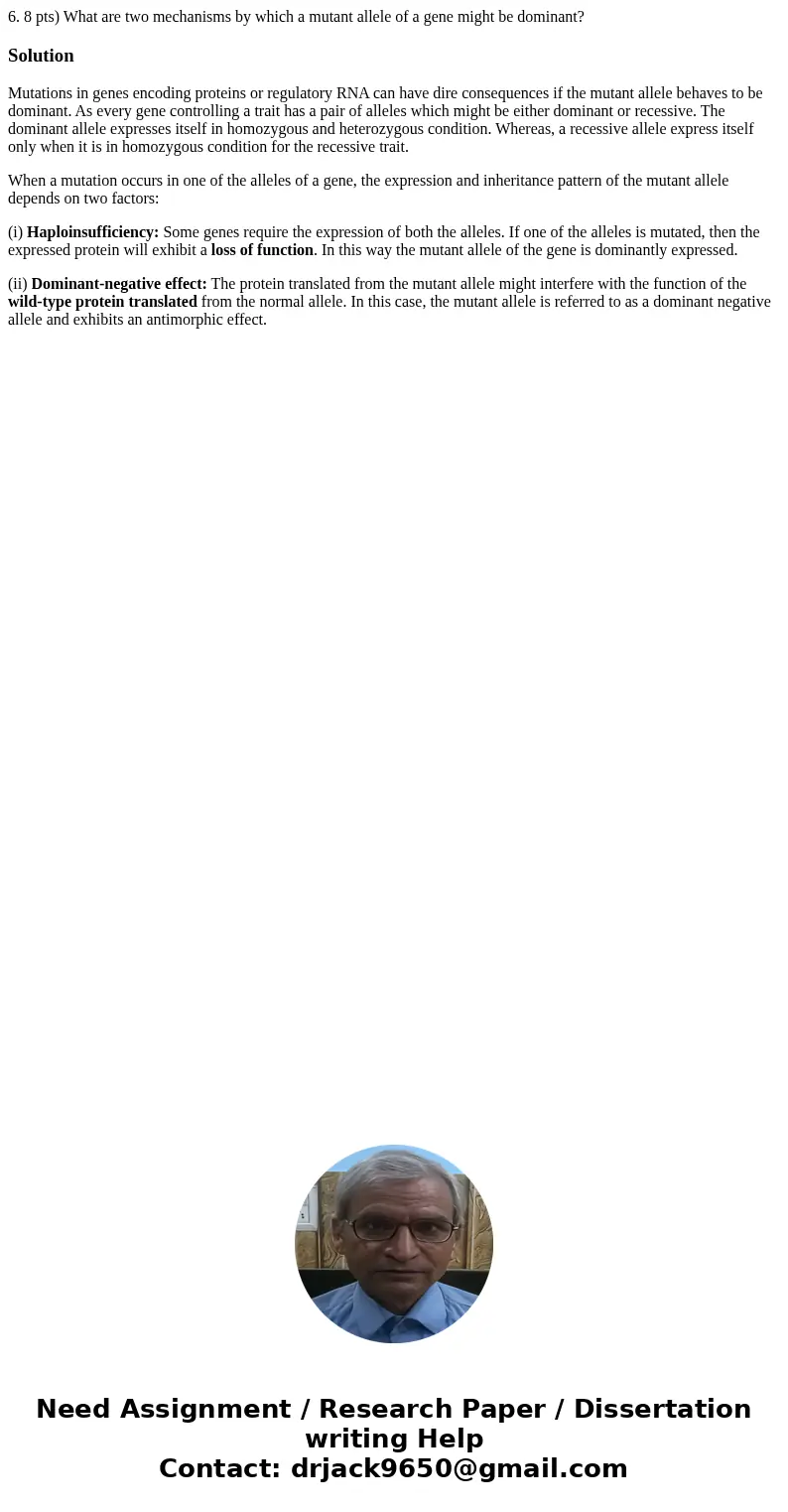6 8 pts What are two mechanisms by which a mutant allele of
Solution
Mutations in genes encoding proteins or regulatory RNA can have dire consequences if the mutant allele behaves to be dominant. As every gene controlling a trait has a pair of alleles which might be either dominant or recessive. The dominant allele expresses itself in homozygous and heterozygous condition. Whereas, a recessive allele express itself only when it is in homozygous condition for the recessive trait.
When a mutation occurs in one of the alleles of a gene, the expression and inheritance pattern of the mutant allele depends on two factors:
(i) Haploinsufficiency: Some genes require the expression of both the alleles. If one of the alleles is mutated, then the expressed protein will exhibit a loss of function. In this way the mutant allele of the gene is dominantly expressed.
(ii) Dominant-negative effect: The protein translated from the mutant allele might interfere with the function of the wild-type protein translated from the normal allele. In this case, the mutant allele is referred to as a dominant negative allele and exhibits an antimorphic effect.

 Homework Sourse
Homework Sourse